Here are a couple of example mazes. These come from old competitions and will give you some idea of what is going on. The numbers are created using the flooding algorithm described on the maze solving page. The highlighted path is the shortest route in terms of cells but may well not be the fastest for a smart mouse.
It would seem that you could chart the growing sophistication of competitive mice from the maze designs used in the competitions. For example, when mice began to do diagonal runs, mazes started to test that ability.
This maze seems to have taken little imagination to create. It comes from the early days of the competition and was used in a competition in the US in 1982. There seems to be little that can be done to optimise the route beyond that highlighted. I would guess that, at the time, most mice were concerned with the apparently simple task of running down a corridor. A task which is fundamental to the operation of a mouse and which is not as easy as it looks.
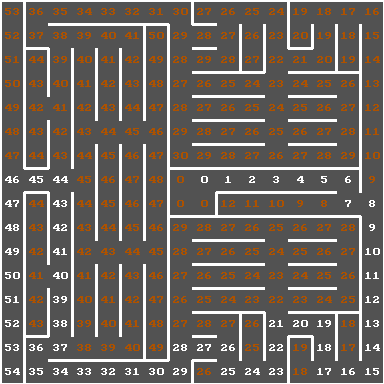
The next maze, on the other hand, was used in Japan in 1991. You can see several opportunities for a mouse that can run diagonally through the maze to improve its run beyond the highlighted selection. Notice that the diagonal improvements take just as many cells. I suppose that is by design rather than by accident. There is also the chance for a mouse with good straight-line speed to take a slightly longer path around the edge of the maze. How would you know you have found the ‘best’ route? Your searching algorithm may well miss the fast outside run. You should also see that some cells are inaccessible.
A good maze this one.
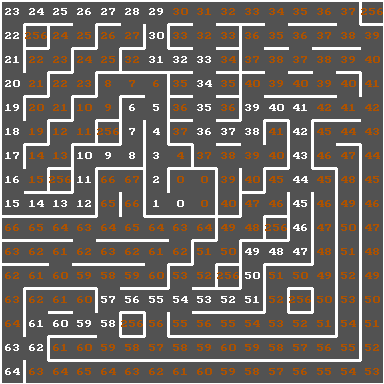
There have been many competitions over the years and so there are a good few examples of competition mazes. I have shown here a few more examples with possible routes marked on them. Remember that these are the simple flooded route and do not take into account the advantages of different styles of turn, diagonal running etc.
A note of caution is in order. I have no idea if these mazes are true representations of the actual mazes used. Other people have collected them and there are occasional differences in the drawings from different sources. You are also pretty well on your own when it comes to deciding exactly where which competition is referred to. You will need to make an educated guess from the file name.
Japan 1983:
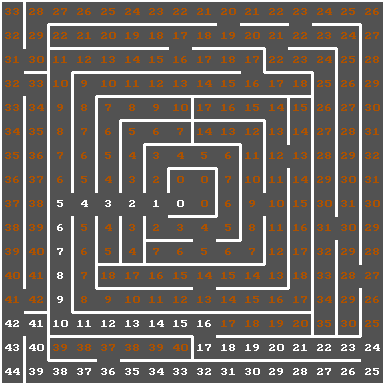
USA 1983:
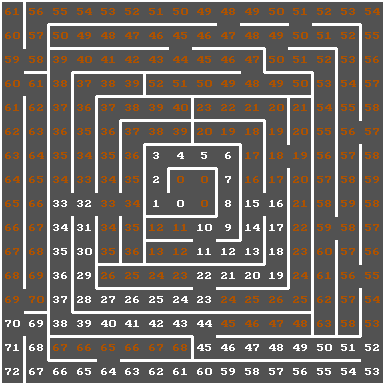
London 1992:
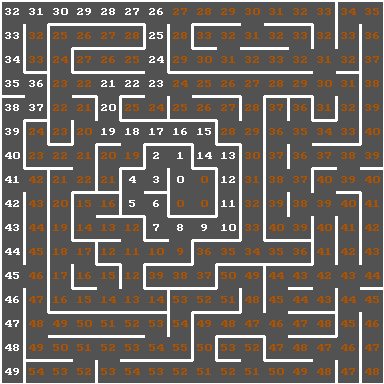
APEC 1993:
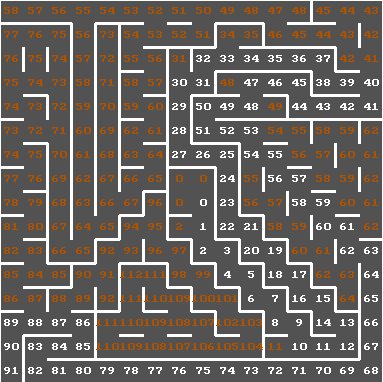
(APEC seem to specialise in hard mazes.)